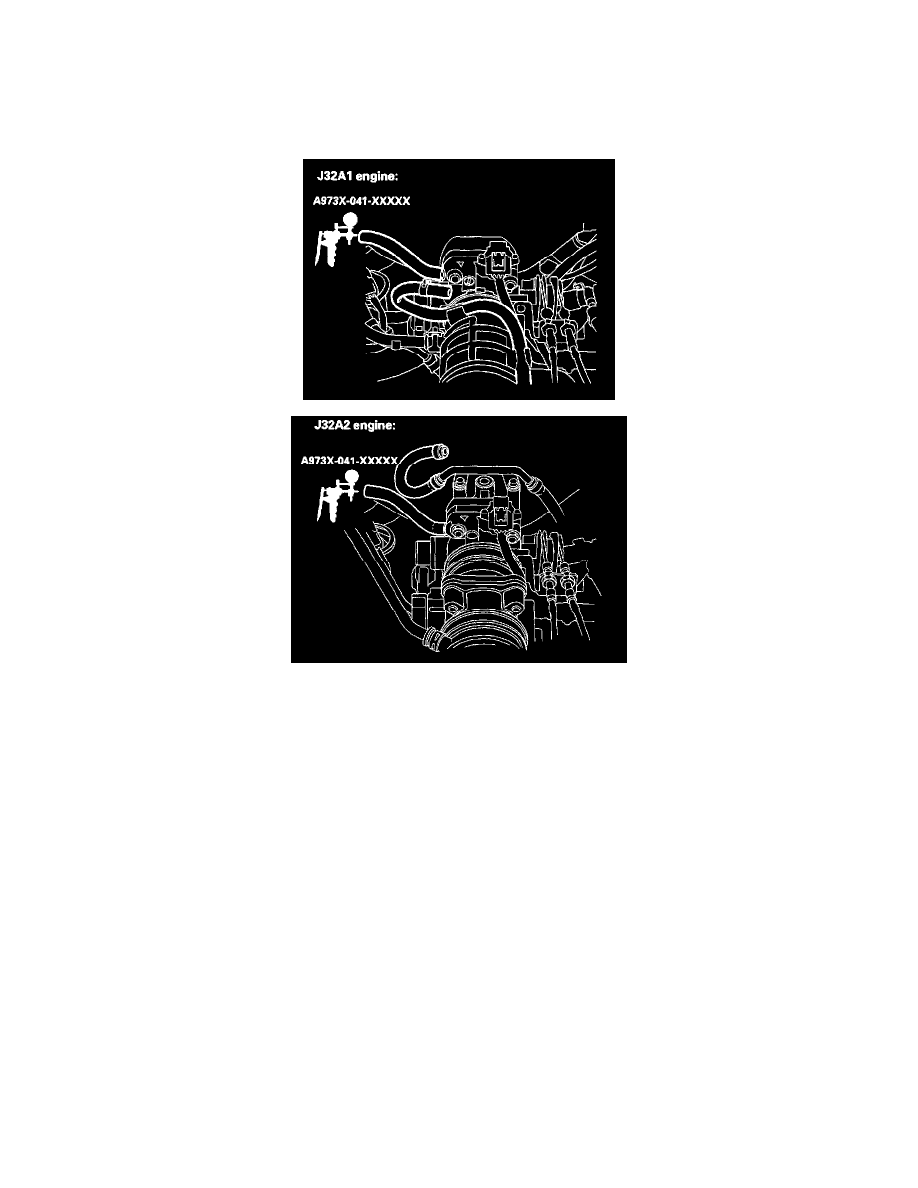3.2CL V6-3.2L SOHC (2003)

Throttle Body: Testing and Inspection
Throttle Body Test
Special Tools Required
Vacuum Pump/Gauge, 0 - 30 in.Hg A973X-041-XXXXX
1. Disconnect the vacuum hose between the top of the throttle body and connect it to a vacuum gauge.
2. Start the engine. Hold the engine at 3,000 rpm with no load (in Park or neutral) until the radiator fan comes on, then let it idle. The gauge should
not indicate any vacuum.
-
If the gauge indicates vacuum, check and if necessary adjust the throttle cable, then go to step 3.
-
If the gauge does not indicate vacuum, go to step 3
3. Open the throttle slightly from idle and check the gauge again. The gauge should indicate vacuum.
-
If the gauge indicates vacuum, go to step 4.
-
If the gauge does not indicate vacuum, check the throttle body port. If it's clogged, clean it with carburetor cleaner, then go to step 4.
4. With the engine OFF, check the throttle cable operation. The cable should operate without binding or sticking.
-
If the cable is OK, go to step 5.
-
If the cable binds or sticks, check the throttle cable and its routing. If it's faulty, reroute it or replace it and adjust it, then go to step 5.
5. Operate the throttle lever by hand to see if the throttle valve and/or shaft are too loose or too tight.
-
If there is excessive play in the throttle valve shaft or the throttle valve binds at the fully closed position, replace the throttle body.
-
If the throttle valve and shaft are OK, go to step 6.
